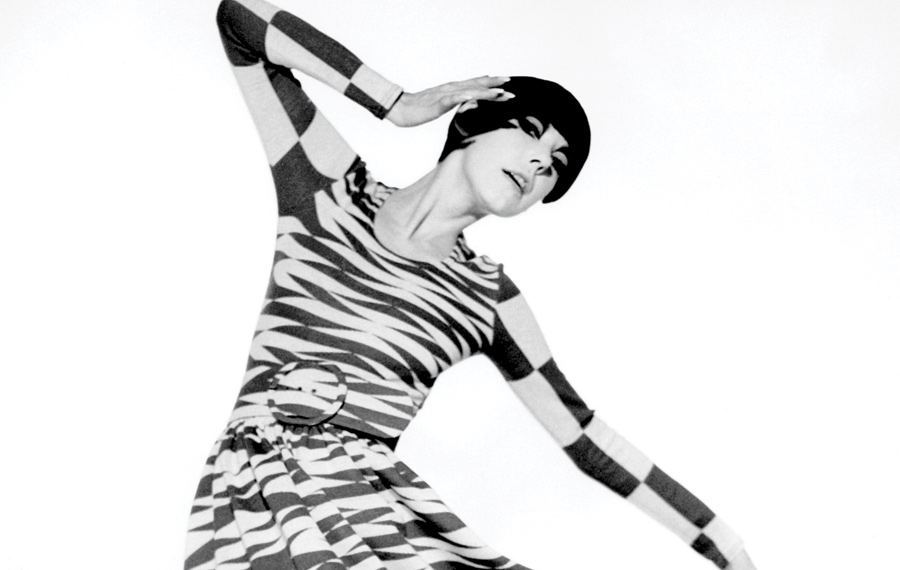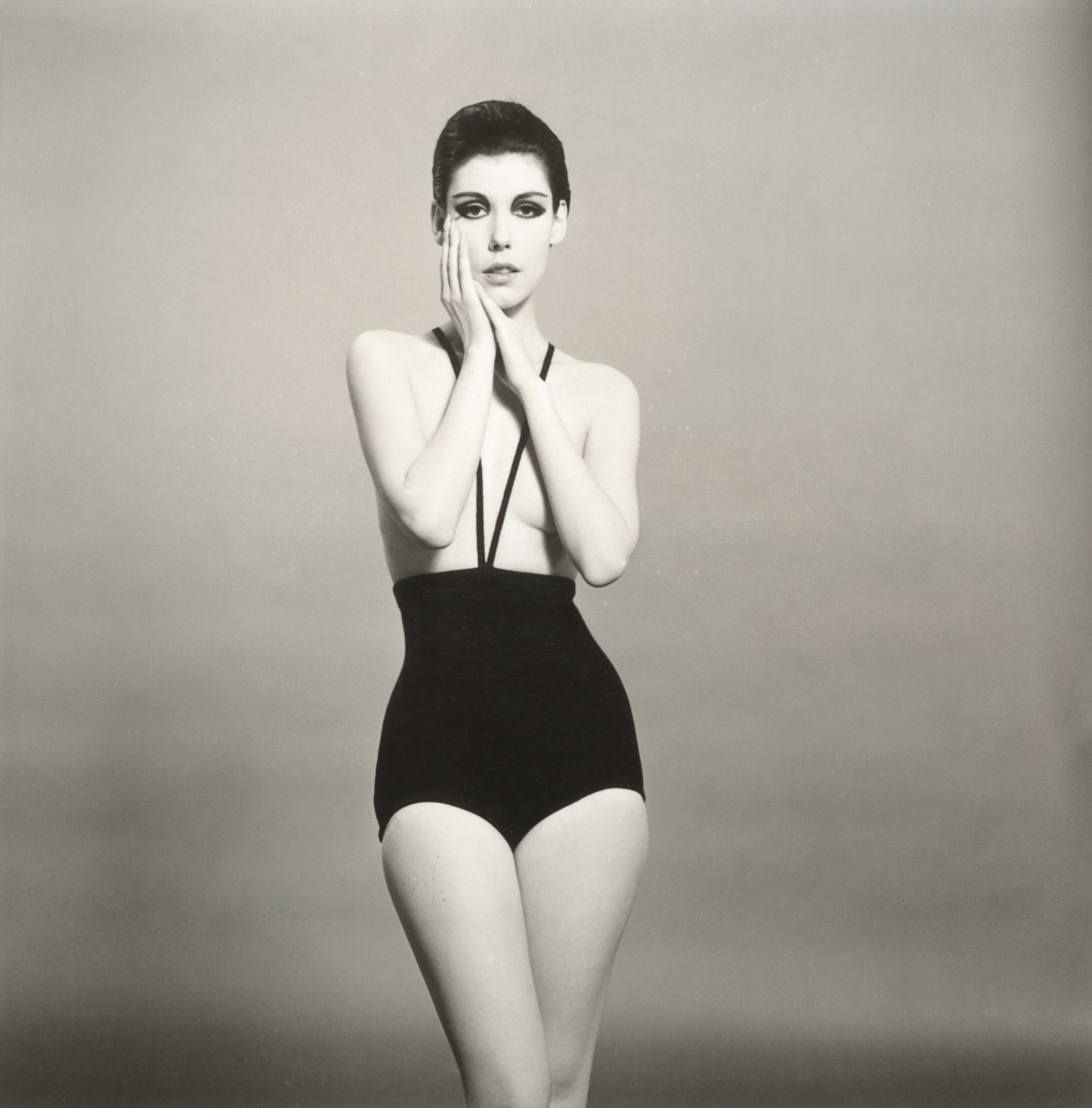 From “Fearless Fashion: Rudi Gernreich” Photo courtesy of Skirball Cultural Center
From “Fearless Fashion: Rudi Gernreich” Photo courtesy of Skirball Cultural Center For pop culture aficionados and those who remember the 1960s, Rudi Gernreich will forever be associated with the scandalous topless “monokini” bathing suit he designed in 1964. But the Austrian Jew, who escaped Vienna in 1938, was more than a fashion provocateur. A pioneer of such liberating clothing as the pantsuit, unisex bodysuits and underwear without infrastructure, he was also a gay rights activist. The new Skirball Cultural Center exhibition “Fearless Fashion: Rudi Gernreich” celebrates his life and work.
Featuring 150 artifacts and 50 mannequins, the exhibition takes visitors on a journey from Gernreich’s early life in Vienna through his most iconic looks and their inspirations. Audio recordings of Gernreich and his friends and colleagues add to the experience. Curators Bethany Montagano and Dani Killam gave the Journal a sneak preview, and explained the idea behind the exhibit.
“We decided to do this exhibition not only because of Rudi Gernreich’s Jewish heritage but also what he did when he came here, from his immigrant refugee roots, to start from nothing and have the vision to effectuate cultural change writ large,” Montagano said. “We wanted to convey that we should use whatever means we can to effect social change and this show really gets across the idea of creating a more just society and being more inclusive, all the things we strive for at the Skirball.”
In addition to clothing borrowed from the Fashion Institute of Design & Merchandising, the Los Angeles County Museum of Art (LACMA) and private lenders, the curators obtained artifacts from the UCLA Special Collections, including personal papers and photographs.
“It was about a three-year process,” Killam said. “We found photographs of Rudi growing up in Vienna, a photo album of him and his family, a very early sketch that he created around 1930. We have a photograph of his aunt’s dress shop where he was introduced to fashion and his creativity blossomed.”
Although he wasn’t a practicing Jew, Gernreich identified as Jewish. “His father, who owned a hosiery company committed suicide as the Nazi regime took over Vienna. Rudi escaped with his mother and then sent back for his two aunts. That’s very much tied to Jewish history and the Holocaust,” Montagano said.
Although he wasn’t a practicing Jew, Gernreich identified as Jewish. “His father, who owned a hosiery company committed suicide as the Nazi regime took over Vienna. Rudi escaped with his mother and then sent back for his two aunts. “
— Bethany Montagano
Aptly, the exhibition kicks off with a mannequin dressed in Gernreich’s topless bathing suit, a panel reading CENSORED across the top. “It’s how people know Rudi,” Montagano said. “It’s also one of the biggest messages behind his work: that it’s not about sexuality, it’s about freeing the body, body positivity, not feeling shame about nudity, about loving yourself. Each section is about freedom: freedom to move, freedom to choose.”

Gernreich’s understructure-free bras, bathing suits and unisex bodysuits celebrated the female form and were revolutionary at the time, Killam said citing thong underwear as an example. “He pushed people beyond their comfort level. That’s what makes change, and we see those changes today.”
Gernreich’s early years in Los Angeles are also represented in the exhibition, showcasing his work with the Lester Horton Dance Company and as co-founder of the gay rights Mattachine Society. There’s also a peplum top and pedal-pusher pants outfit that was sold at the Jax boutique in the 1960s. But the exhibition concentrates mainly on the 1960s and ’70s. “We settled on this specific range of his career, because his fashion aligned with what was going on at the time,” Killam said.
“He’d sit outside his studio on Santa Monica Boulevard and watch kids walk by and see what they were wearing,” Montagano said. “He was also designing in response to flower power, the Watts riots, Kent State [shooting]. He reacted to that and was willing to take a risk.”
One section of the exhibition shows two costume designs from 1976; a striking black-and-white long dress from 1971; a selection of miniskirts and pantsuits; and an area highlighting Gernreich’s brightly colored, ready-to-wear line and his design process. Another section shows how he used unconventional and unexpected materials including transparent plastics, vinyl inserts, bike springs and dog leashes in his avant-garde designs.
“The biggest challenge was to strike the perfect balance between a well-executed exhibition and one that does justice to an underrepresented fashion designer,” Montagano said. She has her theories as to why Gernreich isn’t as well known as other designers of the era.
“There are a couple of explanations,” she said. “One, Rudi died early, at 62. He also got fed up with the fashion industry several times. He broke with high fashion precedence and struck a deal with Montgomery Ward in 1966. Some people may say he sold out to couture, but he made clothing more accessible to people.”

She added she believes Gernreich would be proud of the exhibition, “because we show the depth and values breadth of his design acumen and we were able to put forward his social conscience and values that drove everything he did.”
“One of the things I love about Rudi Gernreich is he had such a sense of joy and wit in his approach to fashion and I’d like people to leave with a sense of joy and enthusiasm about the clothing and objects they saw here,” Killam said. “People tend to look at clothing from a superficial viewpoint and lens. But clothing is material culture and it can convey social messages. The message I’d like people to come away with is that what you wear is powerful.”
Montagano emphasized that the exhibit “gets into so many issues that we’re dealing with now, and the very innovative ways that Gernreich traversed very difficult subjects like gender fluidity and body image. I hope people will be inspired by that and moved to use whatever platform they have for good,” she said. “I hope that they come away inspired.”
“Fearless Fashion: Rudi Gernreich” is on view through Sept. 1 at the Skirball Cultural Center.






















 More news and opinions than at a Shabbat dinner, right in your inbox.
More news and opinions than at a Shabbat dinner, right in your inbox.